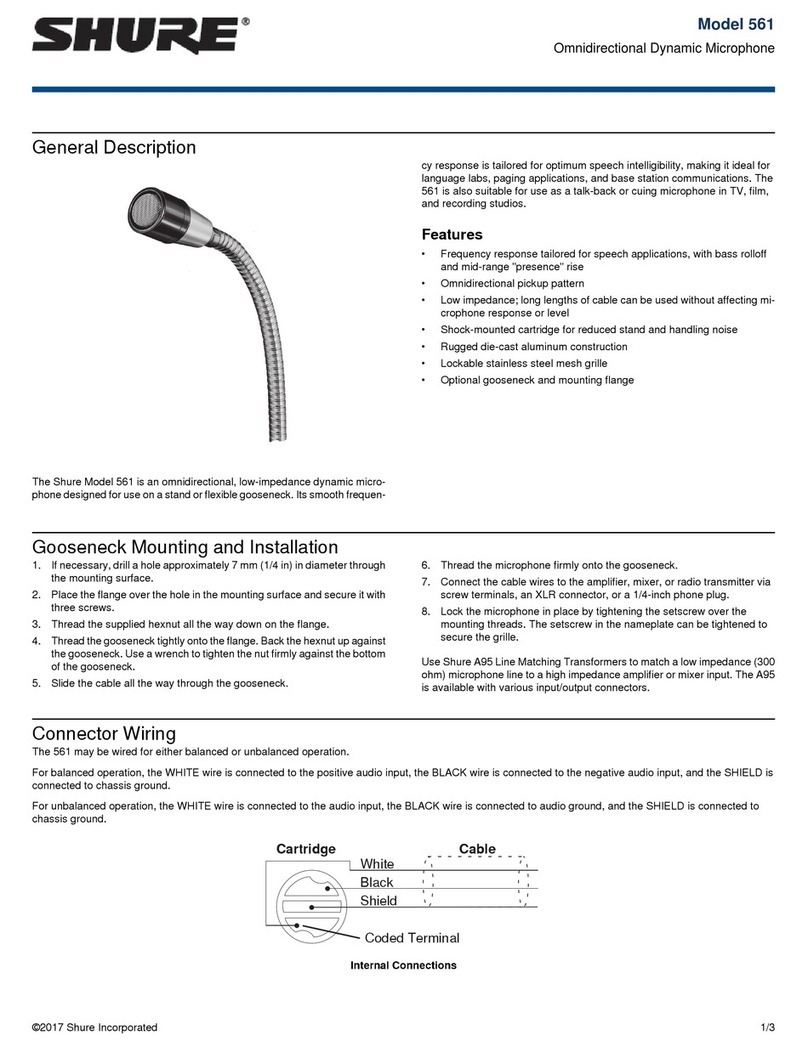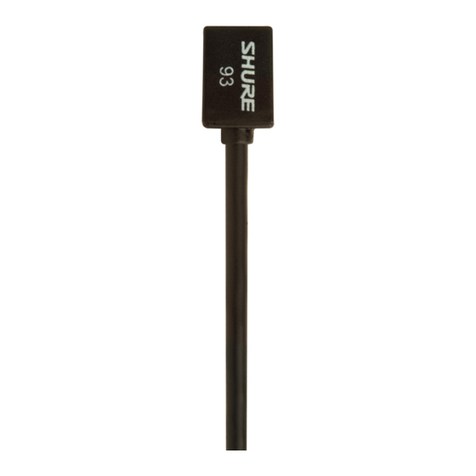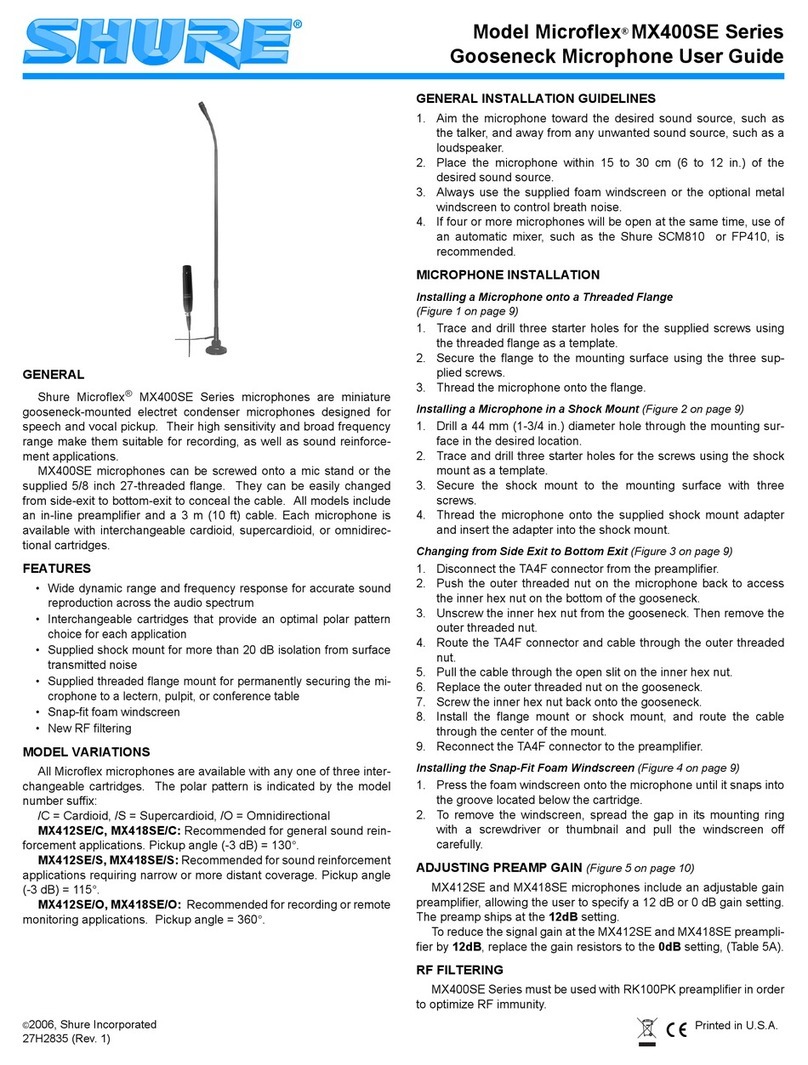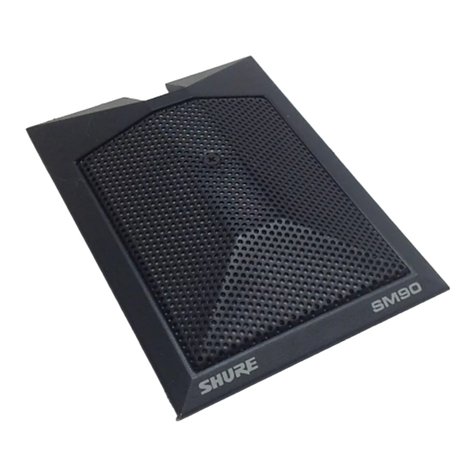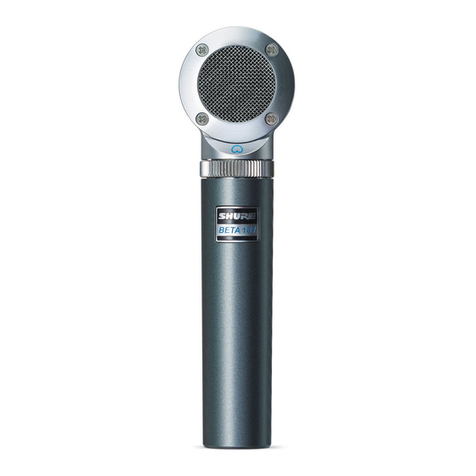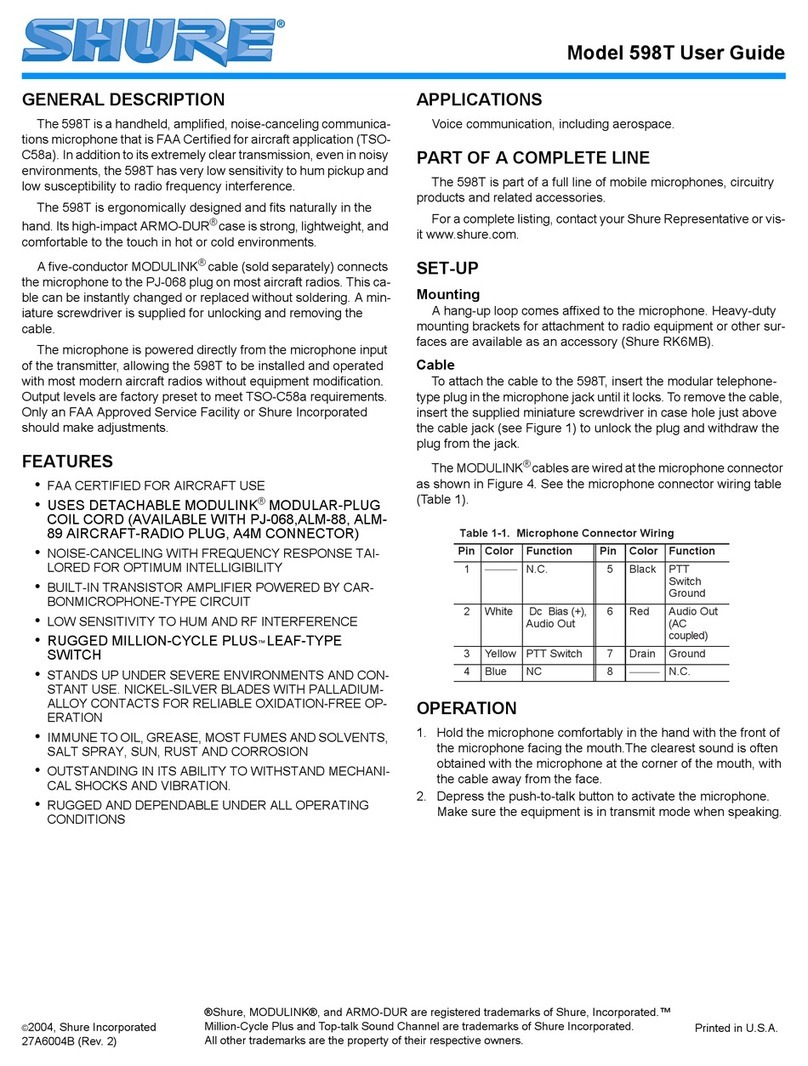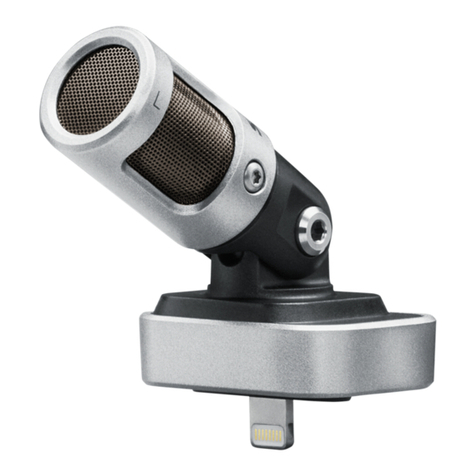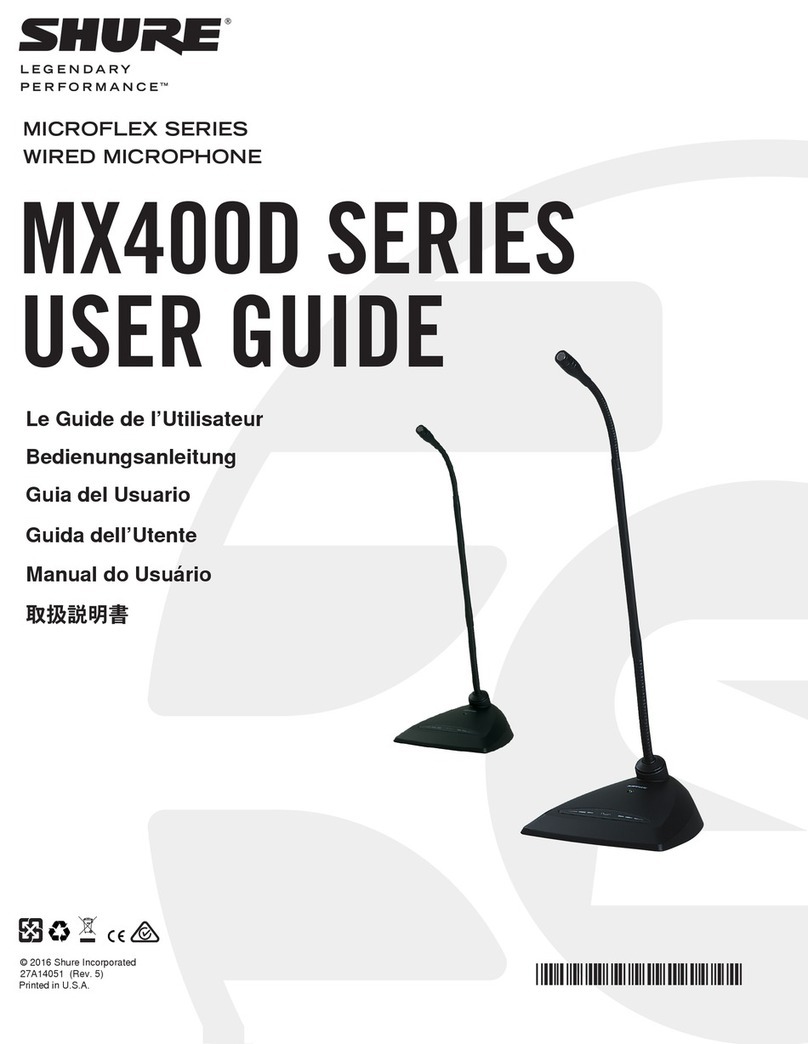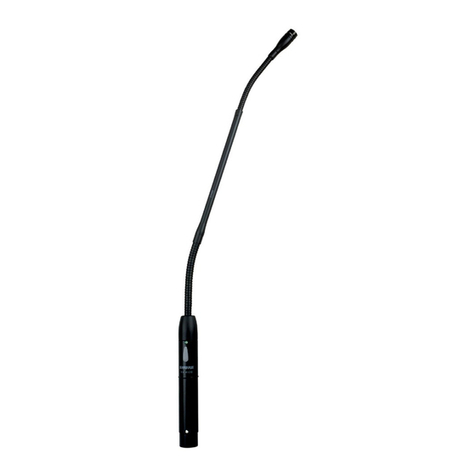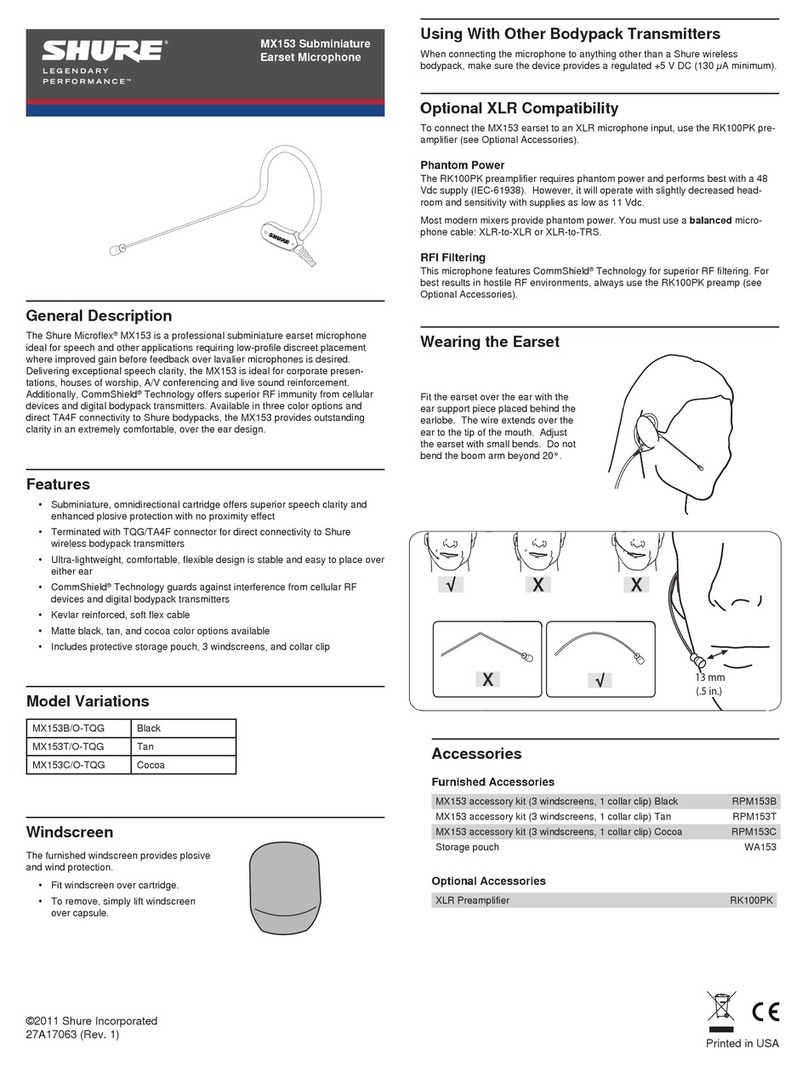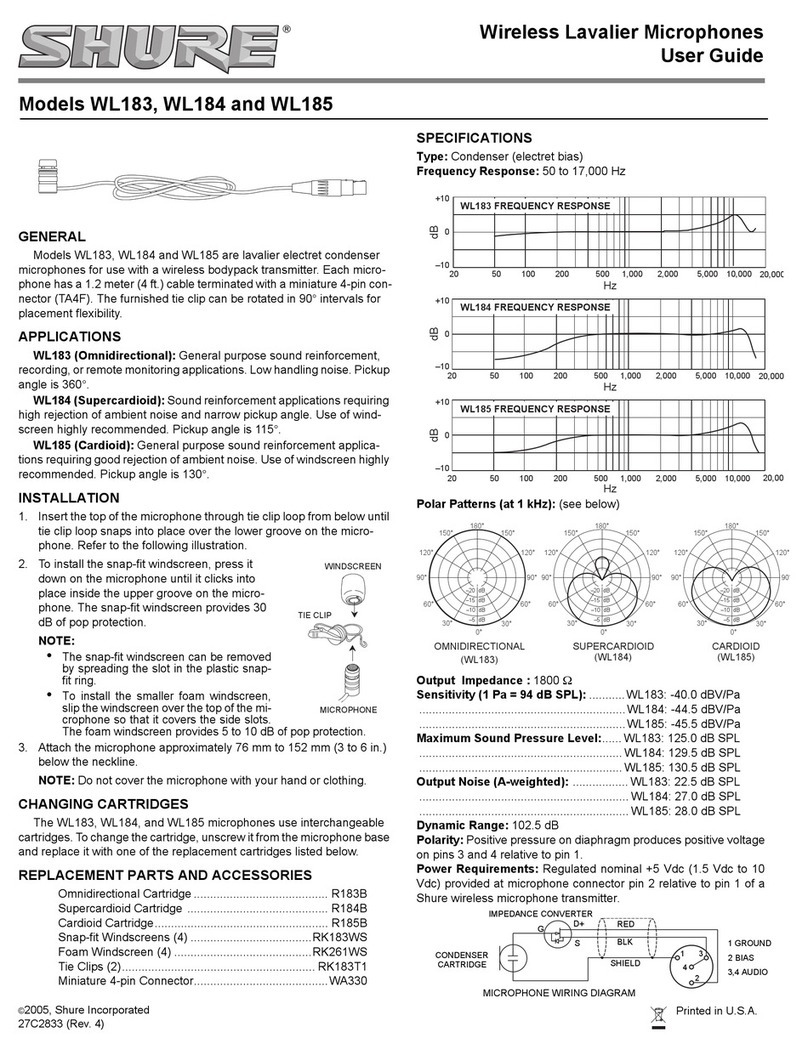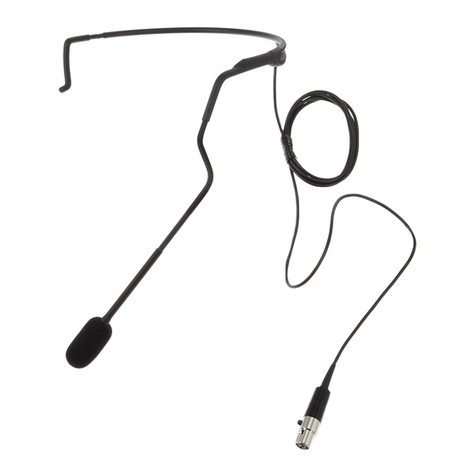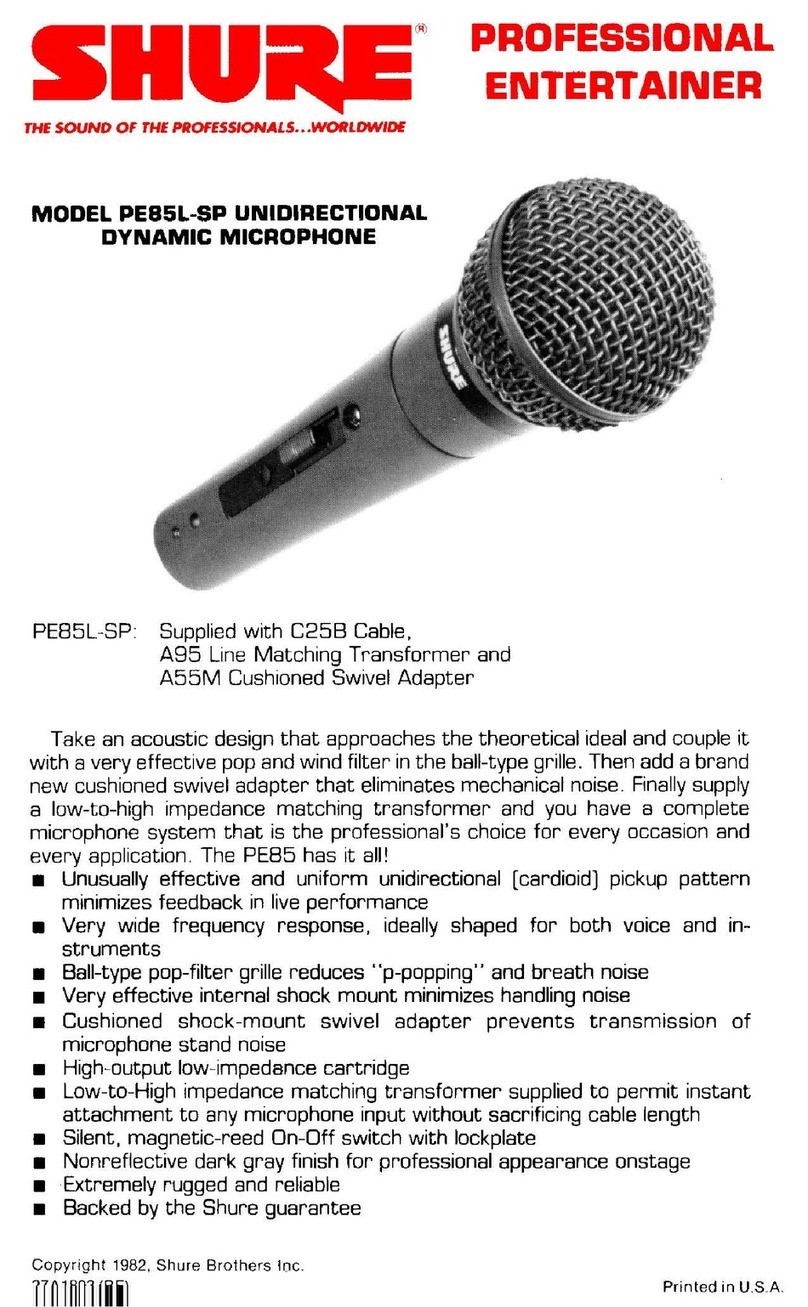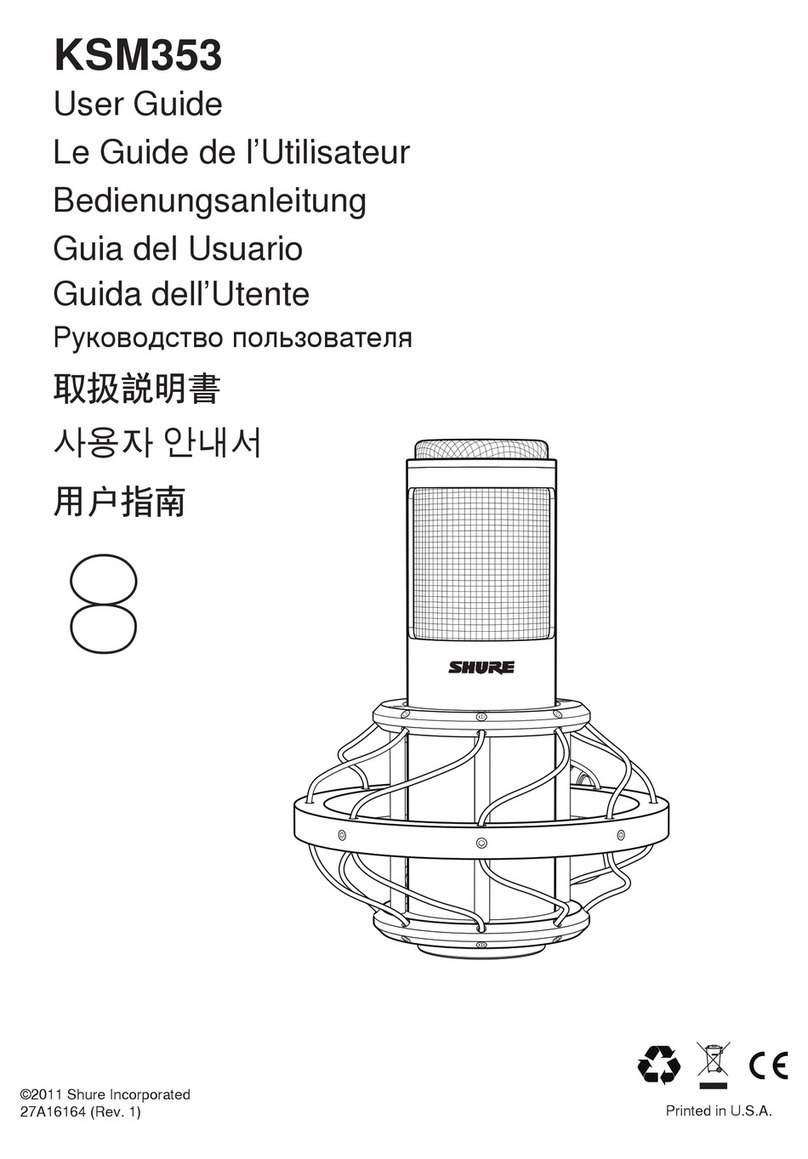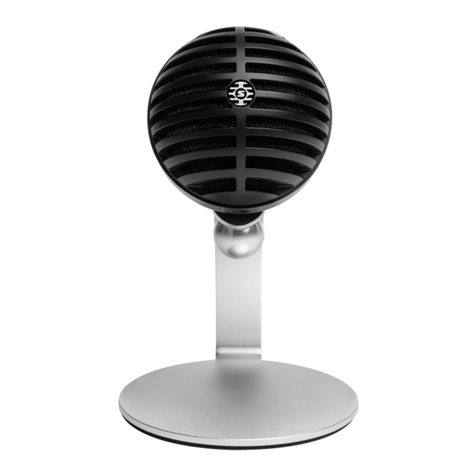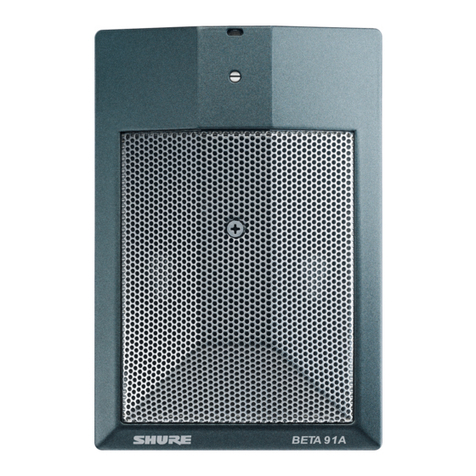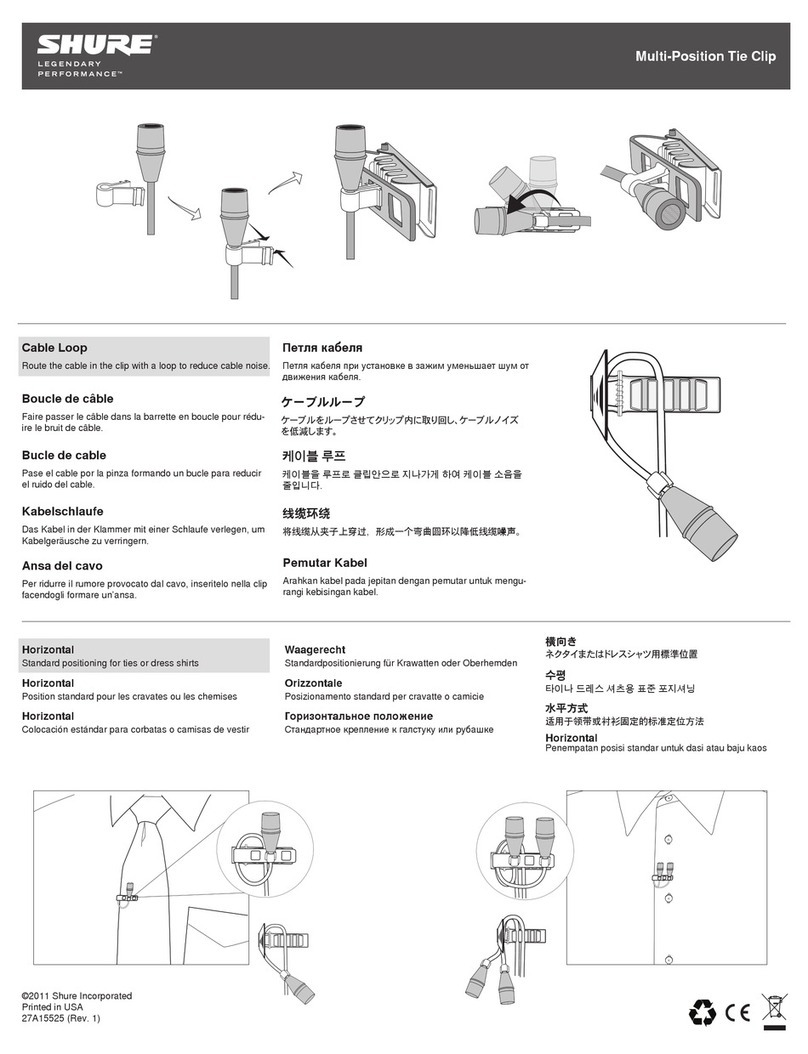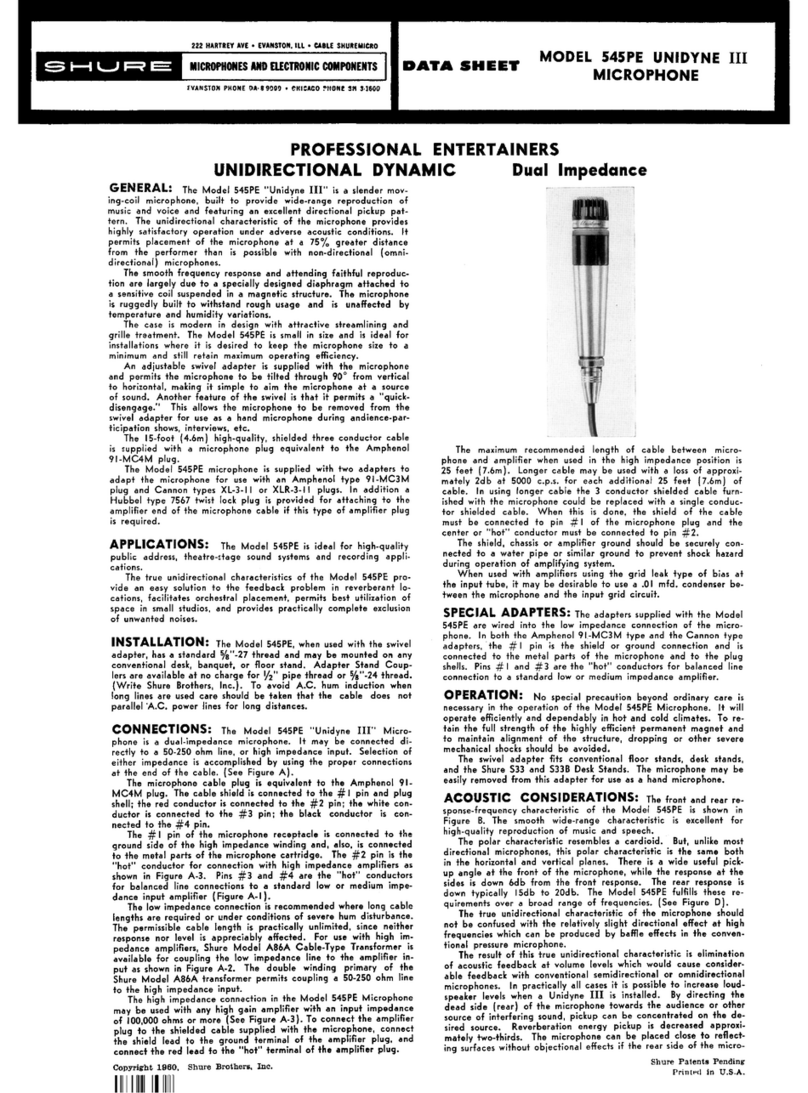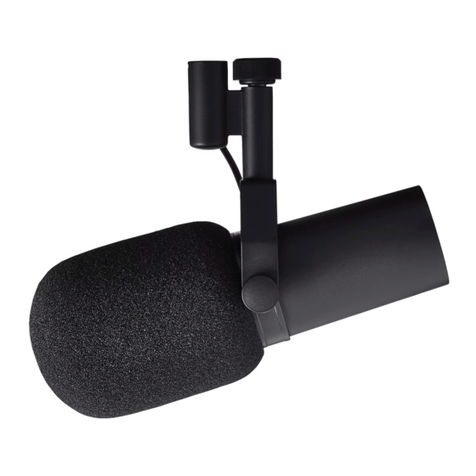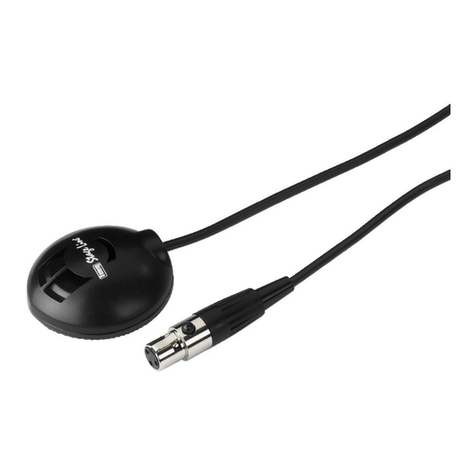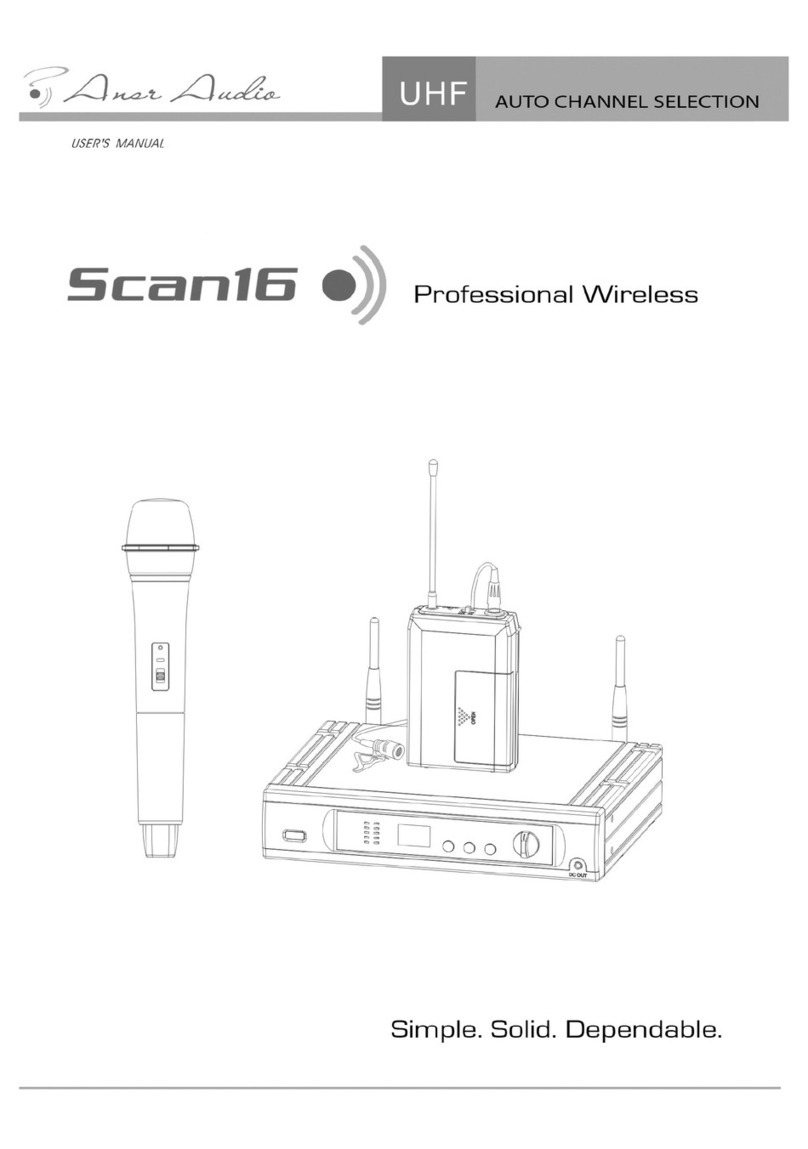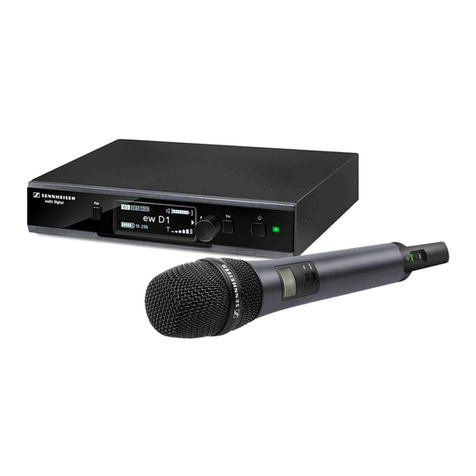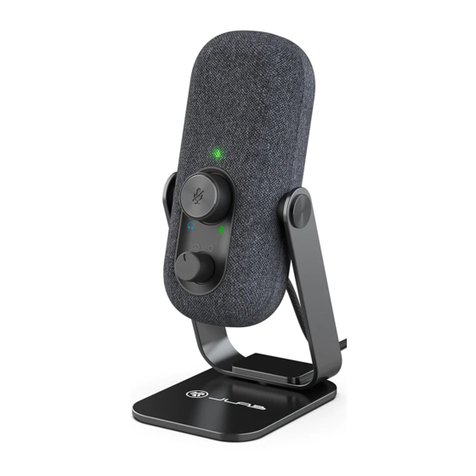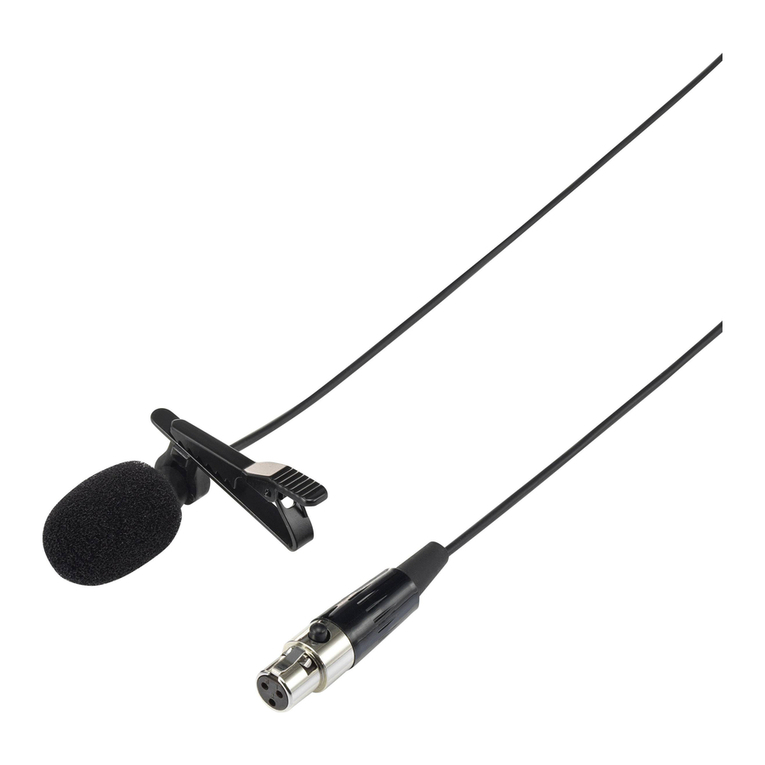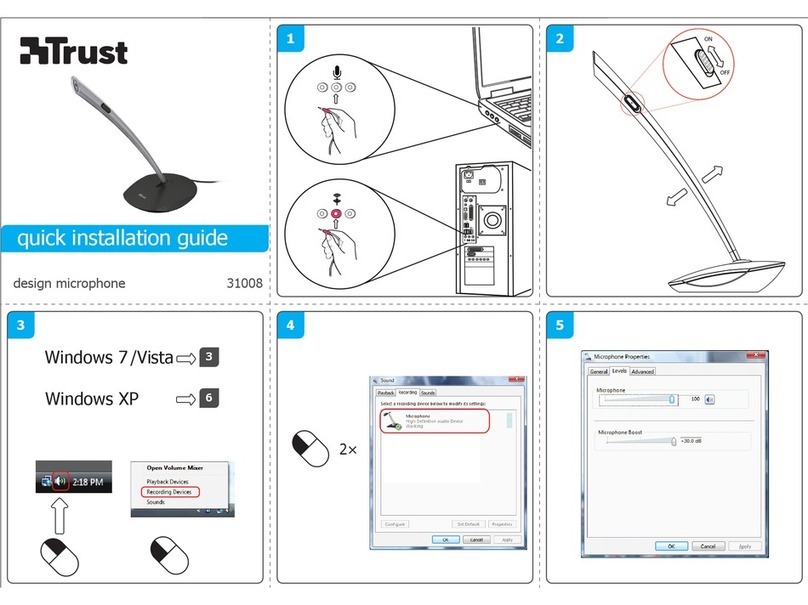
9
SM87A
MICROFONO A CONDENSATORE
A SUPERCARDIOIDE
Il Modello SM87A Shure è un microfono palmare a condensatore
di qualità professionale, adoperabile in impianti di amplicazione
sonora,radiodiffusioneeinstudidiregistrazione.Presentaun’elevata
reiezione delle sorgenti sonore indesiderate, caratterizzata da un
diagrammapolareasupercardioide,chelorendeunostrumentoideale
perl’usoconsingolistrumentiinunsistemaapiùmicrofonioperl’uso
di singole sorgenti in un ambiente con riverberazione o rumoroso.
L’SM87A introduce un’attenuazione controllata alle basse
frequenze adatta per ottenere prestazioni ottimali in caso di
utilizzazione di sorgenti sonore a distanza ravvicinata. Un
ltro antivento e antischiocco integrale a tre stadi protegge dai
rumori del vento e della respirazione. Il supporto antivibrazione
incorporato riduce i rumori del sostegno e degli spostamenti
del microfono L’SM87A funziona con alimentazione virtuale.
Caratteristiche
Diagramma di ricezione a supercardioide con alta
direttività
Attenuazione controllata alle basse frequenze
Suscettività molto bassa alla radiofrequenza e al ronzio
magnetico
Minima inuenza delle variazioni dell’impedenza di
carico
Filtro antivento e antischiocco incorporato
Elemento trasduttore con supporto antivibrazione
Esecuzione robusta, che garantisce un’afdabilità
eccezionale
Utilizzabile in un ampio campo di temperature e umidità
Accetta una vasta gamma di alimentazioni virtuali,
comprese le tensioni DIN 45 596 da 11 e 52 V c.c.
APPLICAZIONE E COLLOCAZIONE
La tabella seguente indica le applicazioni e le tecniche di
collocazione più comuni. Tenete presente che la collocazione dei
microfoni è principalmente una questione di gusto personale—
non esiste una posizione “corretta” in cui disporre il microfono.
POSIZIONE CONSIGLIATA
PER IL MICROFONO QUALITÀ DEI TONI
Labbra a meno di 15 cm o
in contatto con l’antivento,
in asse con il microfono.
Suono robusto, enfasi dei toni
bassi, massimo isolamento
dalle altre sorgenti.
Distanza della bocca da 15 a
60 cm, appena sopra il naso. Suononaturale,tonibassiridotti.
Distanza della bocca da 20 a
60 cm leggermente spostato
da un lato.
Suononaturale,tonibassiridotti
eattenuazionedeisuonisibilanti.
Distanza da a 90 cm a 1,8 m. Suono distante e afevolito;
livelli signicativi di rumore
ambientale.
•
•
•
•
•
•
•
•
•
Regole generali per l’uso del microfono
Rivolgete il microfono verso la sorgente sonora desiderata
e ad un angolo di 125° rispetto alle sorgenti indesiderate.
Non collocate sorgenti sonore indesiderate direttamente
dietro il microfono, perché i microfoni a supercardioide,
come ad esempio il SM87A, hanno uno stretto campo di
ricezione, pari a circa 180°. Fate riferimento alla Figura 1.
Collocate il microfono il più vicino possibile alla sorgente
sonora prescelta. Fate riferimento alla tabella precedente.
Usate un solo microfono per ogni sorgente sonora.
La distanza tra i microfoni deve essere pari a circa tre volte la
distanza tra ogni sorgente e il rispettivo microfono.
Collocate i microfoni il più lontano possibile dalle superci
riettenti.
Per una risposta più elevata ai bassi, tenete il microfono molto
vicino alle labbra.
Usate il minor numero di microfoni possibile.
Se usate il microfono all’esterno, adoperate un antivento.
Evitate movimenti eccessivi del microfono, per ridurre al
minimo la ricezione di rumori e vibrazioni meccaniche.
Non coprite la griglia con le mani.
180o
125o
125o
90o
0o
90o
GIUSTA 0o
90o
180o
ERRATAGIUSTA
125o
90o
0o
180o
90o
90o
COLLOCAZIONE DI SORGENTI SONORE INDESIDERATE
FIGURA 1
USO
Alimentazione
IlmodelloSM87Anecessitadialimentazionevirtuale,chepuòessere
applicata al microfono da un alimentatore ester-no (ad esempio il
modello PS1A Shure) o direttamente da preamplicatori, mixer o con-
solle con alimentazione virtuale incorporata. Le sorgenti adeguate
devonoapplicareun’alimentazionevirtualecompresatra11e52Vc.c.
Effetto di prossimità
I microfoni unidirezionali, quali ad esempio il SM87A, ampli-
cano progressivamente le basse frequenze da 10 a 15 dB a
100 Hz quando il microfono si trova ad una distanza di circa
6 mm dalla sorgente sonora. Questo fenomeno, chiamato ef-
fetto di prossimità, può essere utilizzato per creare un suono più
caldo e potente. Per evitare un suono esplosivo alle basse fre-
quenze durante l’uso a distanza ravvicinata, la risposta ai bassi
del SM87A si attenua gradualmente. Ciò fornisce un maggiore
controllo e permette all’utente di sfruttare l’effetto di prossimità.
1.
2.
3.
4.
5.
6.
7.
8.
9.
10.

